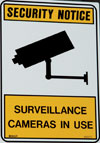

Traditional security control rooms have used monitor walls for CCTV (closed circuit television) monitoring.
Such monitor walls were designed to allow security personnel the ability to view a specific screen to assess a situation and to make decisions on what should be done. In addition, there are many other displays (usually computer outputs) that are required in addition to those CCTV displays.
As operations and visualisation needs grew, it soon became apparent that the monitor walls did not provide the flexibility required. Monitor walls, once in place, were difficult to move without a lot of structural changes, and the screens were of fixed size and each monitor could only take one camera feed.
The cost of running the walls is high and directly proportional to the number of camera feeds (monitors). In addition, there is a significant amount of heat generated by each monitor (roughly 125 W each) that increases the operation costs for electricity and cooling needed in the control rooms.
Added to the above, with IP technologies pushing for digitisation of video signals, the world of computer signals and CCTV signals started to merge - requiring both signals to be viewed together in many instances. The stage was therefore set for the new technology of display solutions that would reduce the costs and increase the flexibility.
The challenges
The primary challenges of visualisation in the security control room are the costs, flexibility, ergonomics, collaboration and sharing of information, and integration (or automation).
It is reasonable to say that one can comfortably see up to 16 images with a single projector that uses 150 W of power. The traditional approach would use 12 monitors each consuming 150 W of power. With less power being used there is less heat generated and thus less airconditioning needed resulting is a further decrease in running and initial investment.
Furthermore, it is also important to note that today's digital light processing (DLP) rear projection systems are best for 24/7 operations compared to any other display systems as they do not have the inherent 'burn-in' or 'image retention' issues of technologies such as CRT, flat panel plasma or liquid crystal display (LCD) screens. In general therefore, the lifetime operational and maintenance costs of the solution will be much less compared to these technologies.
Flexibility
A single rear-projection system can show a large amount of images in any combination. One image can be large and the rest small; they can be all the same source, or any combination. This provides significant flexibility for the operators to focus on more important issues with larger viewing areas. Central to this is that the visualisation system should be able to display computer graphical images of either direct base-band feeds, hosting client software of compressed signals over IP networks.
Ergonomics
There are clear and obvious benefits to making more information available on a large screen to facilitate collaboration between operators and provide management overview. Decision making is faster as there is no need for the operator to waste time in navigation functions such as zooming in on the picture or executing complex operations to bring up other feeds from other video sources or even applications.
Collaboration and information sharing
Finally, information displayed on such intelligent display systems can also be integrated with higher level systems and therefore be 'event driven'. This means that higher-level software can manage and control the visualisation solution to react in a specific manner appropriate to the event detected. For example, specific layouts can be programmed to change with the trigger of an event. The higher-level software then triggers the layout to change so that the operator's attention is drawn to the incident instantaneously.
Conclusion
The needs of visualisation for the security control rooms today can best be met by blending the best in display ergonomics, networking and integration technologies. This blended networked visualisation solution is the only real option to provide the needed size, flexibility and intelligence (for networking and control) in order to get faster response times and better informed decision making as systems grow in size and complexity.
For details contact Questek Advanced Technologies, +27 (0)11 706 0405, [email protected], www.questek.co.za
| Tel: | +27 11 706 0405 |
| Email: | [email protected] |
| www: | www.questekav.co.za |
| Articles: | More information and articles about Questek Advanced Technologies |

© Technews Publishing (Pty) Ltd. | All Rights Reserved.